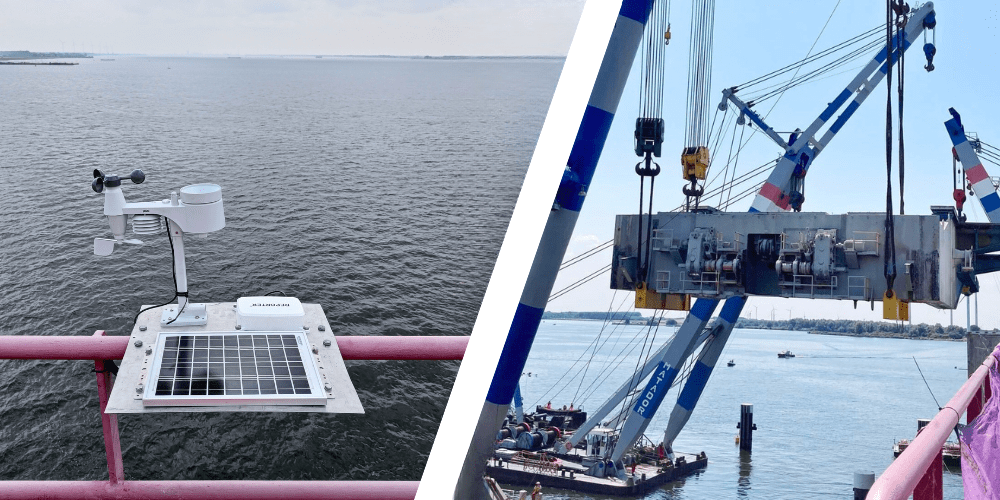Storm & scaffolding: leveraging weather stations for enhanced construction site safety

Storms and scaffolding pose significant challenges to construction sites. While complete avoidance may be impossible, proactive measures to protect your scaffolding (and cranes for that matter) in advance of heavy storms can minimise damage and ensure worker safety.
Utilising a weather station for wind monitoring provides invaluable data onsite, empowering site managers to watch weather changes closely and take timely actions.
Storm & scaffolding: protecting your assets
Scaffolding, vulnerable to strong winds, requires proper anchoring and removal of banners and foils before storms. Monitoring wind speed at your construction site allows for proactive measures to secure scaffolding, preventing potential damage.
Crane & wind: ensuring stability in adverse weather
Similar to scaffolding, cranes face risks in windy conditions. Crane stability depends on whether the crane is on a stable and level underground, and can freely move along with the wind. Cranes should be as free as a weathercock when the weather turns bad. You want your crane to have the least amount of resistance in a storm. Failing to turn off the sway control or slew brakes results in cranes being blown away in storms. If strong winds occur on an active site, the use of the crane should always be suspended.
Real-time monitoring of wind speed with alarm notifications enables prompt suspension of crane operations during storms, ensuring safety on the construction site.
Hollandia Infra used the Crodeon weather station to view live data during their renovation project concerning the Haringvliet bridge.

Smart remote monitoring: the key to proactive safety measures
Implementing a professional weather station offers real-time data transmission to the cloud. At the same time a weather alert system facilitates the remote monitoring of construction sites. Customisable alarm settings enable tailored alerts for critical parameters, empowering quick responses to adverse weather conditions.
Such an autonomous remote monitoring system would be Reporter. Reporter sends its data to the Crodeon Dashboard, here you will be able to follow up on the current situation onsite. When you install your Crodeon weather station on your construction site, attached to your crane or scaffolding, the weather sensors will be able to precisely measure the weather conditions of that location.
Real-time alarm notifications when you need them most
Reporter is customisable to your needs, you can set an alarm for the parameters that are important to you. Receive alarm notifications when windspeed increases. When these real-time alarm notifications pop up on your phone screen you can act and react as needed. The scaffolding can still be protected no matter how unprepared you were for the storm.

Mobile & agile solution for versatile protection
Reporter's mobility allows easy relocation to different sites, providing ongoing weather monitoring. Beyond storm protection, it offers valuable insights into temperature and rainfall. It enhances overall efficiency and safety at a construction site. A weather station can even help you determine adverse weather leave during inclement weather.
Conclusion
Effective construction site management requires proactive strategies to mitigate risks posed by adverse weather conditions. Leveraging weather stations for real-time monitoring empowers site managers to safeguard scaffolding, cranes, and personnel, ensuring uninterrupted progress and enhanced safety standards.
Don't hesitate to reach out to us through our contact form if you need more information about wind monitoring for construction site safety.
Sources
Tobias, M. (2019, August 26). The importance of weather monitoring on construction sites. Construction Executive. https://www.constructionexec.com/article/the-importance-of-weather-monitoring-on-construction-sites
















